When it comes to choosing a shirt size, the indications given in size charts can vary from brand to brand. In France, we're used to determining the size of a shirt according to the neckline. This corresponds to the size of your neck (generally from 36 to 46 for standard men's sizes). In simpler terms, we also find international sizes expressed in S, M, L, XL, XXL, etc... But if you want more information on the overall cut of the shirt, you need to refer to the shirt size guide.
Be careful not to confuse a size chart with a table of measurements that helps you choose the right size, based on your body measurements! Be sure to refer to the instructions on the chart to find out whether we're talking about shirt measurements or your body measurements.
On the right, the illustration implies that the measurements correspond to those of the shirt. This is the measurement of the circumference of the shirt's chest. Sometimes, for simplicity's sake, we simply measure the half-chest by laying the shirt flat and measuring the width from the right aisle to the left armpit. Multiplying by 2 gives the circumference.
On the left, the illustration means that measurements must be taken at the body (in this case the chest) to determine the equivalent size.
The difference between these 2 measurements is called the ease. Chest circumference (body measurement) + ease = Shirt chest circumference. Ease is necessary to be able to move, breathe and move around in the garment. The tighter the fit, the tighter the shirt. The greater the ease, the wider the shirt will be on you.
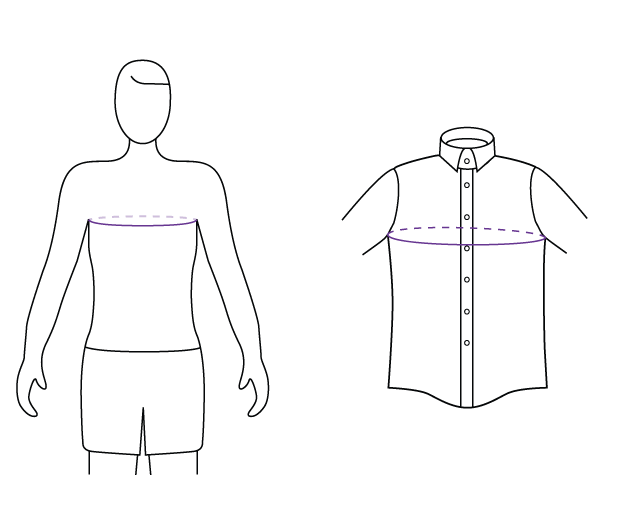
To make things easier for you, we've compiled the international, US/UK and European size equivalents in the table below, as well as the size correspondence between the measured chest circumference and the actual shirt size at chest level.
N.B.: Why chest size? → It's the basic measurement of a shirt, and the most reliable way of finding the right size.
Size equivalence
| Size equivalence | Chest circumference(body) | Collar circumference(shirt) | Chest circumference(shirt) | |||
| Inches (US/UK) | Cm (EU) | Inches (US/UK) | Cm (EU) | Inches (US/UK) | Cm (EU) | |
| XXS | 32-34 | 81-86 | 14.25 | 36 | 37 | 94 |
| XS | 34-36 | 86-91 | 14.5 | 37 | 38.5 | 98 |
| S | 36-38 | 91-96 | 15 | 38 | 40 | 102 |
| M | 38-40 | 96-101 | 16 | 41 | 45 | 114 |
| L | 40-42 | 101-106 | 17 | 43 | 48 | 122 |
| XL | 42-44 | 106-111 | 17.5 | 44 | 49.5 | 126 |
| XXL | 44-46 | 111-116 | 18 | 46 | 52.5 | 134 |
In an effort to simplify sizing with the S, M, L, XL nomenclature, you'll notice that ready-to-wear has also made some straightforward cuts in certain intermediate sizes. You can see that chest sizes 106 cm (collar 39), 110 cm (collar 40), 118 cm (collar 42) and 130 cm (collar 45) are missing. This may explain why you find yourself between a size S and a size M or a size M and a size L on this type of size. Generally, the collar fits, but the chest doesn't, or it's the other way around.
Of course, the big advantage of making a made-to-measure shirt is that you don't have to follow these rules to make a shirt chest and collar to your measurements, without having to choose between the two.
For very tall men - over 1.85 m, for example - the subject is more complex, as chest measurement alone is not enough. The sleeves and shirt have to be longer, while maintaining the same curve. Some specialist brands offer a wider range of sizes, with dedicated sizes for large men's shirts.
If you can't find what you're looking for in ready-to-wear, there's of course our range of made-to-measure shirts, where we can alter the sleeve and shirt length independently of all other measurements. A sure-fire way to get the right shirt length, even for the tallest men!
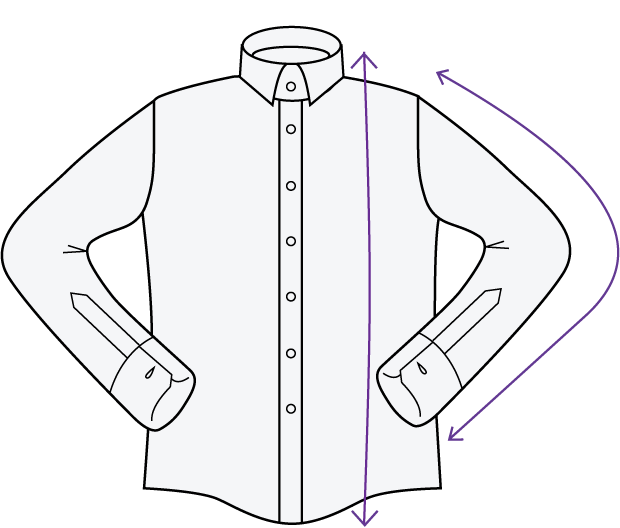
To determine the right shirt size, we give you 4 key benchmarks that will help you choose your shirt.
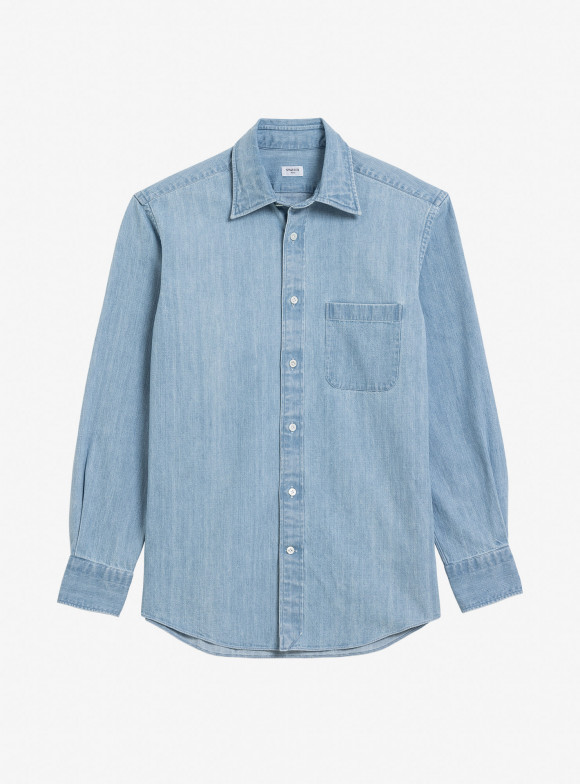
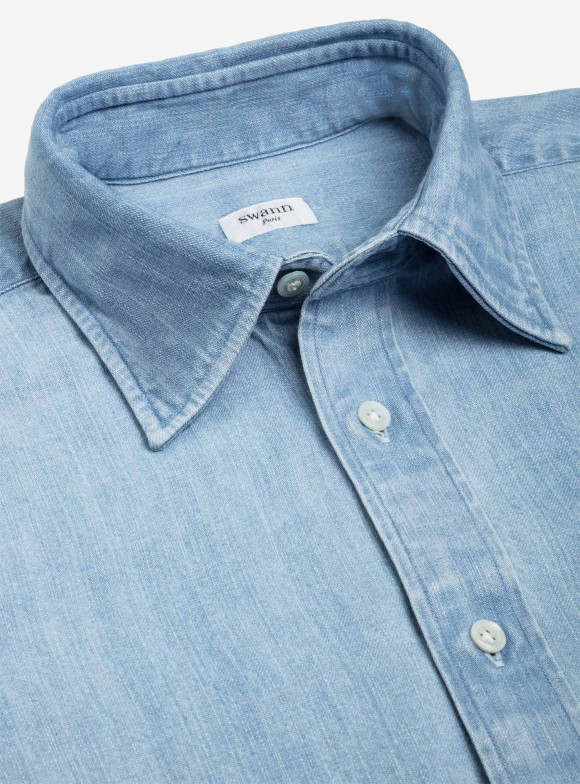
Large Swallow Collar, Round Cuff 1 Button


Small Positano Collar, Half-Moon Cuffs
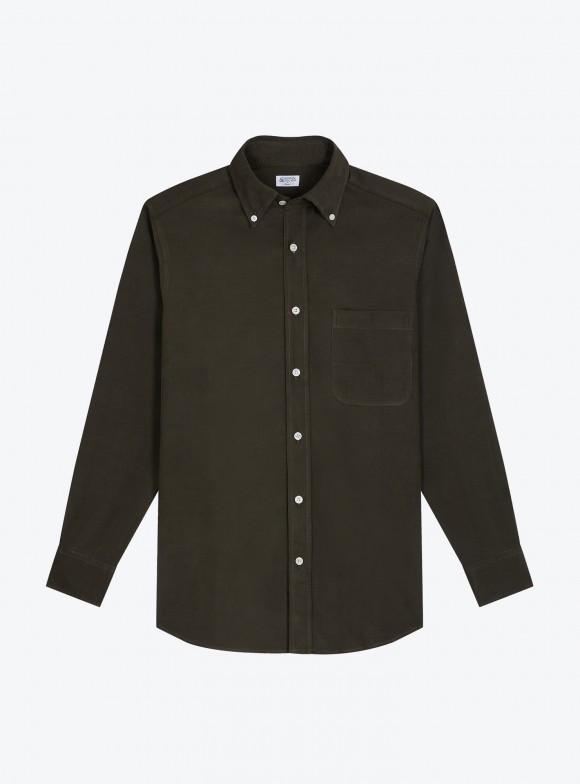
High Amalfi Collar, Half-Moon Cuffs

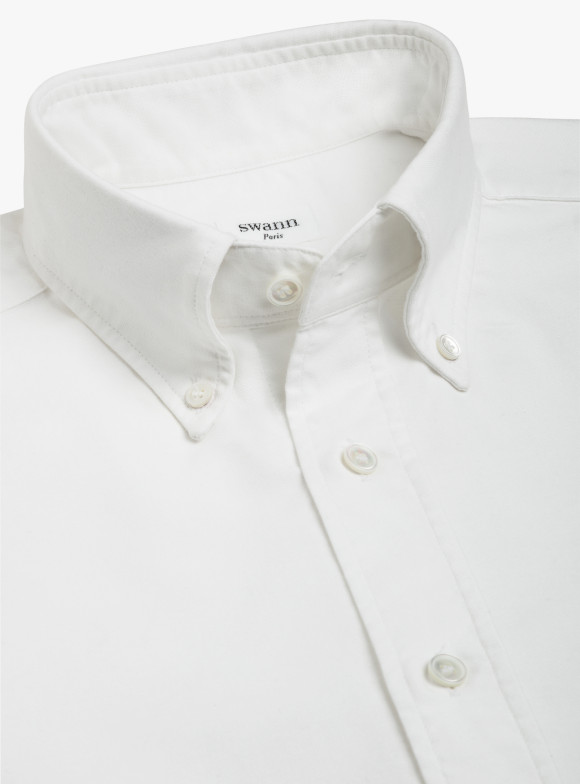
High Amalfi Collar, Half-Moon Cuffs
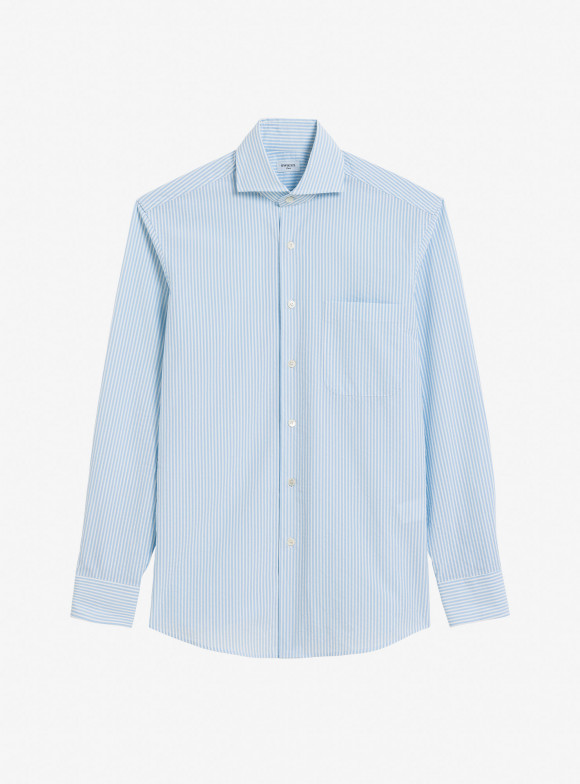
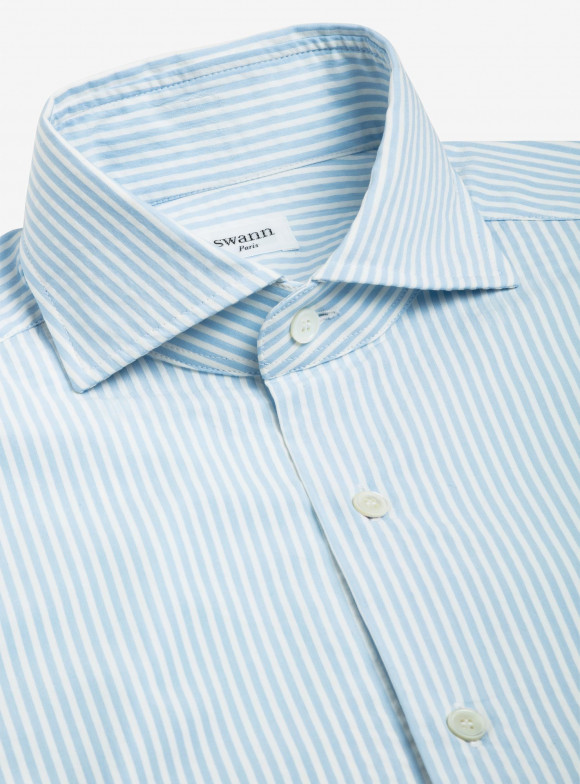
Positano Collar, Half-Moon Cuffs


High Amalfi Collar, Half-Moon Cuffs
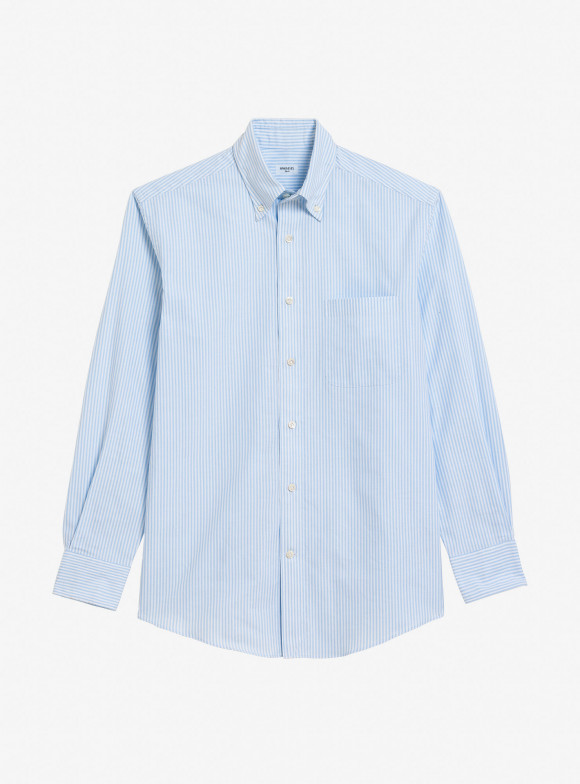
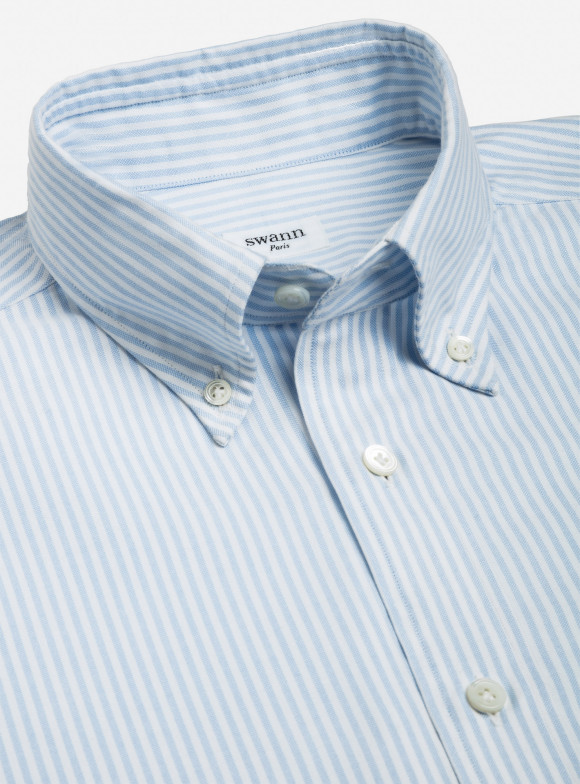
High Amalfi Collar, Round Cuff 1 Button
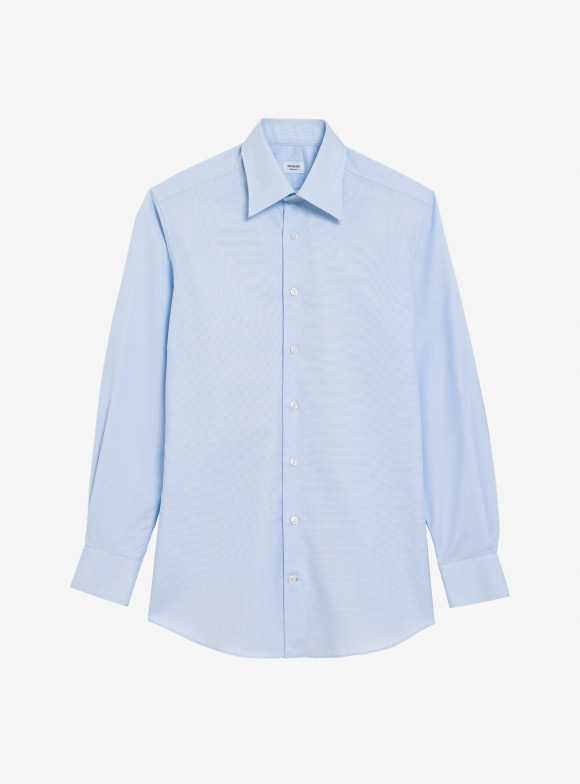
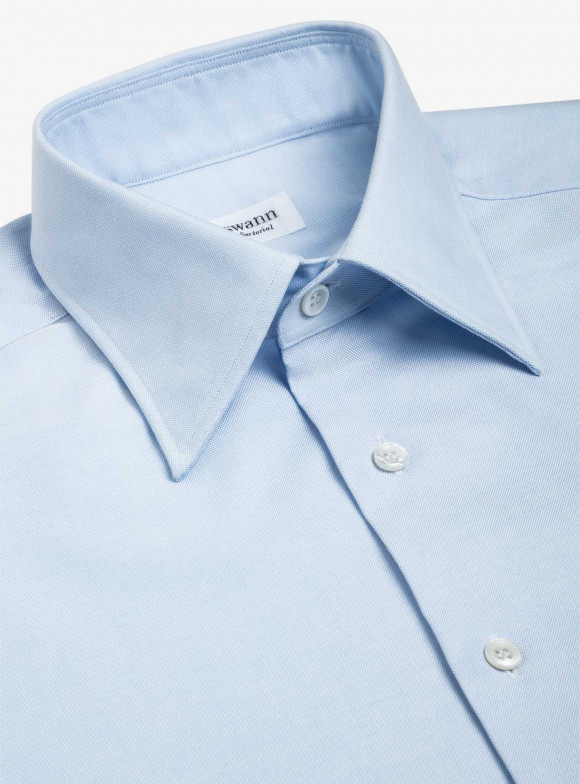
Large Swallow Collar, Half-Moon Cuffs
For some people, it can be difficult to find all those measurements on a ready-to-wear shirt. And for good reason: they start with a silhouette that comes in several sizes. By opting for our made-to-measure shirt service, you can create your shirt by modifying a dozen or so independent measurement points. In our boutique or online via our website, you can easily make your own made-to-measure shirt, made in France.
See our made-to-measure shirts